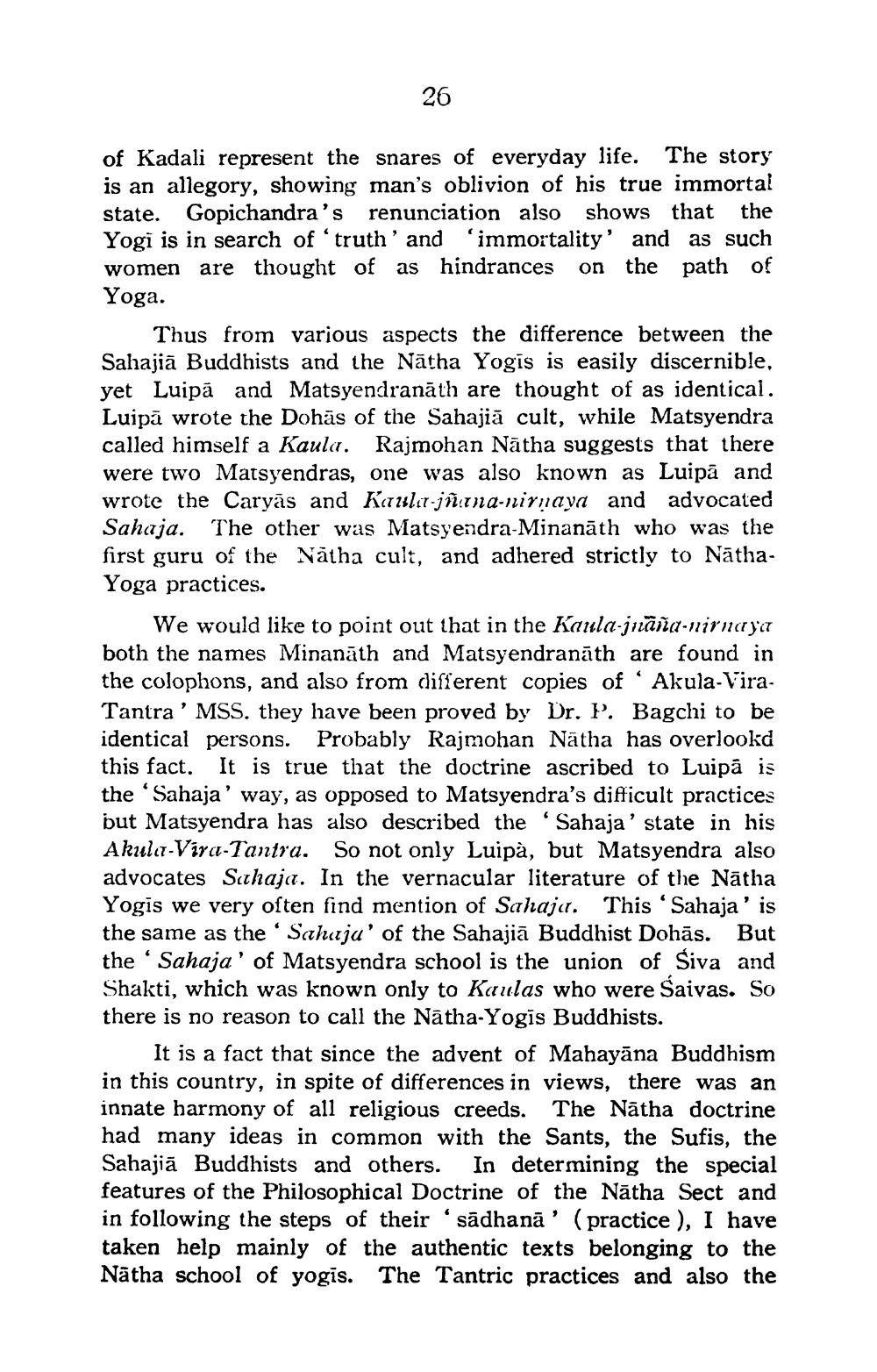________________
26
of Kadali represent the snares of everyday life. The story is an allegory, showing man's oblivion of his true immortal state. Gopichandra's renunciation also shows that the Yogi is in search of 'truth' and 'immortality' and as such women are thought of as hindrances on the path of Yoga.
Thus from various aspects the difference between the Sahajiā Buddhists and the Nātha Yogis is easily discernible, yet Luipā and Matsyendranāth are thought of as identical. Luipā wrote the Dohās of the Sahajiā cult, while Matsyendra called himself a Kaula. Rajmohan Nātha suggests that there were two Matsyendras, one was also known as Luipā and wrote the Caryās and Kaulit-jñana-nirnaya and advocated Sahaja. The other was Matsyendra-Minanāth who was the first guru of the Nātha cult, and adhered strictly to NāthaYoga practices.
We would like to point out that in the Kaula-juāña-nirnar yar both the names Minanāth and Matsyendranāth are found in the colophons, and also from different copies of 'Akula-ViraTantra ' MSS. they have been proved by Dr. P. Bagchi to be identical persons. Probably Rajmohan Nätha has overlookd this fact. It is true that the doctrine ascribed to Luipā is the 'Sahaja' way, as opposed to Matsyendra's difficult practices but Matsyendra has also described the 'Sahaja' state in his Akula-Viru-Tantra. So not only Luipà, but Matsyendra also advocates Sahaja. In the vernacular literature of the Nātha Yogis we very often find mention of Sahaja. This 'Sahaja' is the same as the 'Sahuju' of the Sahajiā Buddhist Dohās. But the "Sahaja' of Matsyendra school is the union of Siva and Shakti, which was known only to Kaulas who were Saivas. So there is no reason to call the Nātha-Yogis Buddhists.
It is a fact that since the advent of Mahayāna Buddhism in this country, in spite of differences in views, there was an innate harmony of all religious creeds. The Nātha doctrine had many ideas in common with the Sants, the Sufis, the Sahajiā Buddhists and others. In determining the special features of the Philosophical Doctrine of the Nātha Sect and in following the steps of their 'sādhanā' (practice ), I have taken help mainly of the authentic texts belonging to the Nātha school of yogis. The Tantric practices and also the




